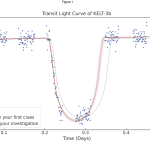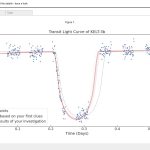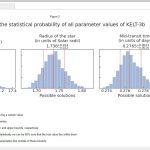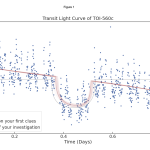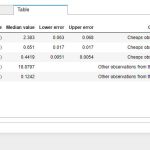
Project Gallery 2023
Secondary students from across Europe became exoplanet detectives with ESA and used Cheops satellite data to uncover the mysteries of two exoplanet targets: KELT-3b and TOI-560c.
Explore the projects below.
Bhavi and Naba
Indus Space Mississauga – Ontario Canada 14 years old 2 / 2
https://docs.google.com/presentation/d/1WwyddS6GFms21xTa6-VDU-g-7uGtapQD_IOvobZ6MGA/edit#slide=id.p
KELT-3b
KELT-3b project description:
KELT-3b has a radius of 16.83 in Earth radii. It is 1.16 AU away from its host star and has a density less than Jupiter’s. It was discovered in 2012 by the KELT survey. It is primarily made of gas and it is known as a Hot Jupiter, as it orbits very close to its host star and has a similar size to the planet of Jupiter. It takes 2.7 days to orbit its host star. KELT-3b is in the Leo constellation and is 690 light years away from our solar system. KELT-3b takes a much shorter time to orbit its host star in comparison to the planets in our Solar System. The closest planet to the sun, Mercury, has an orbital period of 88 days, while KELT-3b has an orbital period of 2.7 days, which shows how much closer KELT-3b is to its host star. It is less dense than Jupiter and is very gaseous.
Supporting files:
TOI-560c
TOI-560c project description:
My team and I were excited to use the software Allesfitter to learn about two mysterious exoplanets. We decided to focus on the Mini-Neptune exoplanet TOI-560c, the second planet found orbiting the star TOI-560. Our team has been hoping to find the radius, size, composition, density, temperature, habitability and other cool facts about this unique exoplanet. We have since figured out how to use allesfitter to access the data from the exoplanets satellite Cheops. We have gained access to tables, histograms and a special light-curve graph displaying information about our exoplanet, TOI-560c. This project has really inspired us to keep using science to uncover even more celestial bodies roaming around our universe. We have found many exciting details about TOI-560c, including everything we had hoped to find. Our report lists these interesting facts, which will hopefully help ESA exoplanet scientists unravel the mystery.
TOI-560c Results and Analysis
This was an exciting research activity to do. We split up our tasks by one person doing the allesfitter data and the other working on the math point of view. We discovered after a few meetings of research that TOI-560c is an exoplanet that is extremely hot. We also got to know more important numerical facts such as: its radius is 2.383 (in units of Earth radii), its orbital period is 18.8797 (in units of days) and we got both of these from our allesfitter data, its density is 3.95 g/cm^3 and it’s composition is primarily gaseous. We figured this out using the mathematical formulas we learnt from the videos provided to us. We found the distance from the host star which is 0.12 AU, and we figured it out by using the Orbital Semi-Major Axis on the table we received from Allesfitter. We also concluded that TOI-560c was a newly discovered exoplanet by Cheops.
TOI-560c Conclusions
TOI-560c is an exoplanet. When we first came across some basic facts about the planet, we understood that it is a very hot one as its temperatures can exceed mind-bending values. Venus’ temperature though can throw TOI-560c’s temperature out of the game as they both have hot temperatures but have a colossal difference. But the exoplanet is widely compared with Neptune as its class is considered to be “Mini Neptune.” Neptune is also a gas giant and has hydrogen and helium on its surface and in its atmosphere. But because of its class “Mini Neptune”, it is considered to be less massive than the cold ice/gas giant.
Supporting files:


